John and Mary Kormendy: Birding Trip to Tadoba Tiger Reserve (2014) and Kanha National Park (2016)
John and Mary Kormendy: Birding Trip to Ranthambore National Park (2018) -- See Link to Travelog at the End
These are the pictures from a 2014 December trip first to Eastern India and then to Tadoba Tiger Reserve in Maharashtra, central India. Jack Poll was our bird guide throughout India, complemented by local guides. Also included here are pictures from a 2016 May/June trip, again first to Eastern India and then to Kanha National Park Tiger Reserve in Madhya Pradesh, central India. Bird taxonomy follows the Pocket Guide to the Birds of the Indian Subcontinent by Grimmett, Inskipp, and Inskipp (Helm, 2006).
Travel wizard Vinod Goswamy of Babita Tours arranged both trips and accompanied us on the second trip. He decisively solved the many logistic and other glitches that can happen in an India trip. We owe much of the success of our trips to Vinod and Jack.
A few mammal pictures are also included.
The pictures are copyrighted and should not be used without permission.

Indian peafowl (alert males!)

Indian peafowl (female)

Yellow-crowned woodpecker (This is John's life bird, at the lodge outside of Tadoba Tiger Researve)
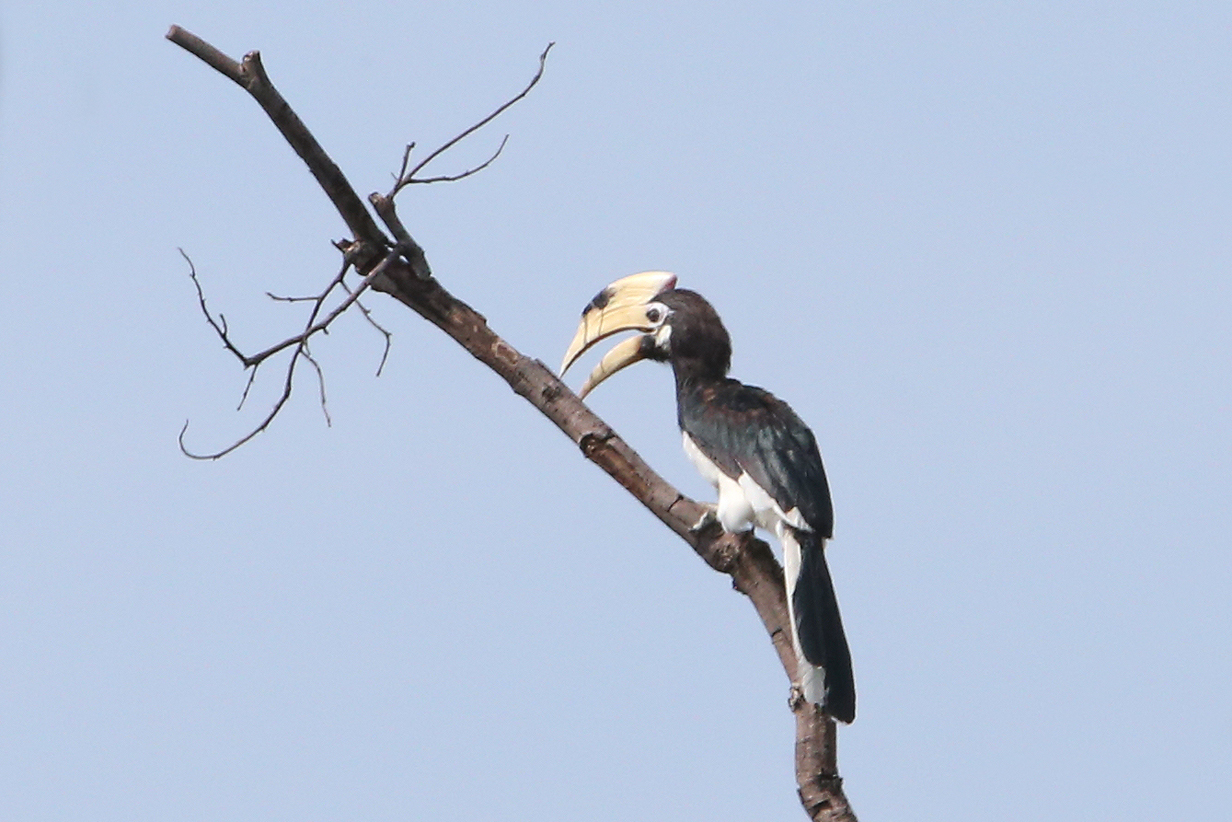
Malabar pied hornbill (This is John's life bird: Kanha, 2016.)

Common hoopoe

Common hoopoe

Eurasian kingfisher (Tadoba Tiger Reserve)

White-throated (Smyrna) kingfisher (Kanha National Park)

Green bee-eater (at our lodge outside Tadoba)

Common hawk-cuckoo (This is our life bird)


Southern Greater coucal (Centropus sinensis parroti - Three birds in Kanha National Park put on a marvellous call display)

Alexandrine parakeet

Plum-headed parakeet (female)

Crested treeswift (Tadoba Tiger Reserve)

Two Indian scops owls (Otus bakkamoena: Kanha National Park)

Jungle owlet with lizard (Kanha National Park)

Spotted dove

Yellow-footed (green) pigeon

Red-wattled lapwing


Red-wattled lapwing

Black-shouldered kite (There were a lot of raptors in Kanha National Park; we interpreted this as a sign of a healthy ecology.}

Long-billed vulture (The fact that vultures are doing well in Kanha National Park whereas they are doing badly almost everywhere else in India is a sign that this is a healthy ecosystem. This is not our life bird, probably, but we got our life bird moments before.)

Red-headed vulture (Also Kanha National Park)
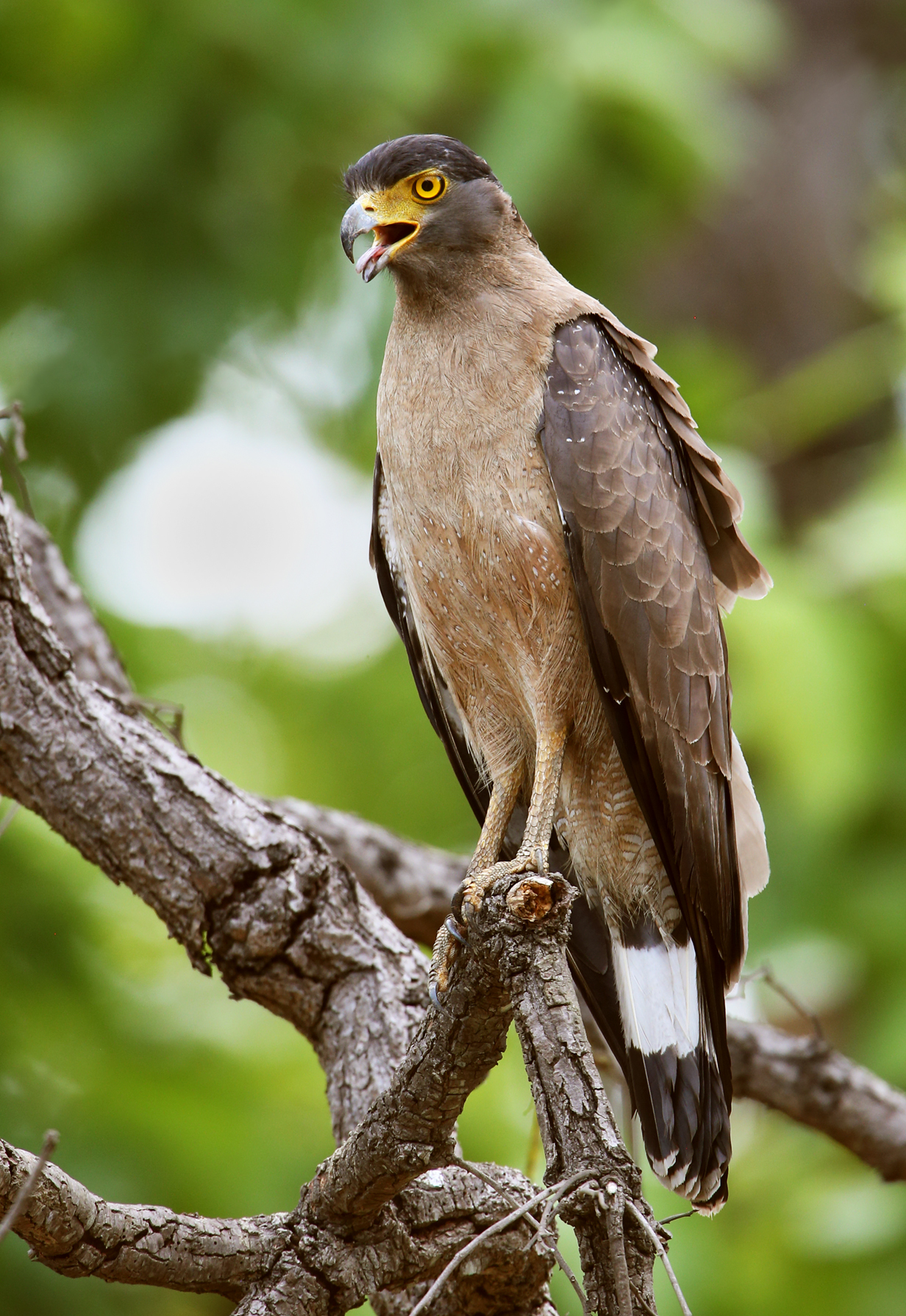
Crested serpent eagle

Shikra (Tadoba Tiger Reserve)


Shikra (Kanha National Park)

Oriental honey-buzzard (Juvenile)

White-eyed buzzard (This is our life bird.)

Black ibis (Tadoba Tiger Reserve: This is our life bird, 2014.)

Black Ibis (not quite mature enough to have a complete red cap: Kanha, 2016)

Bay-backed shrike

Rufous treepie

Orange-headed thrush (Tadoba Tiger Reserve: This is our life bird)

Oriental magpie-robin (female)

Indian robin

Brahminy starling

Barn swallow


Red-vented bulbul

Plain prinia (at our lodge outside the park)

Booted warbler (This is our life bird: At our lodge, outside the park)

Rufous-tailed lark (Tadoba Tiger Researve: This is our life bird)

Chestnut-shouldered petronia (The narrow chestnut shoulder stripe is best seen in the inset pictures)

Paddyfield pipit (This is our life bird.)


Red avadavat (female, at our lodge outside Tadoba)
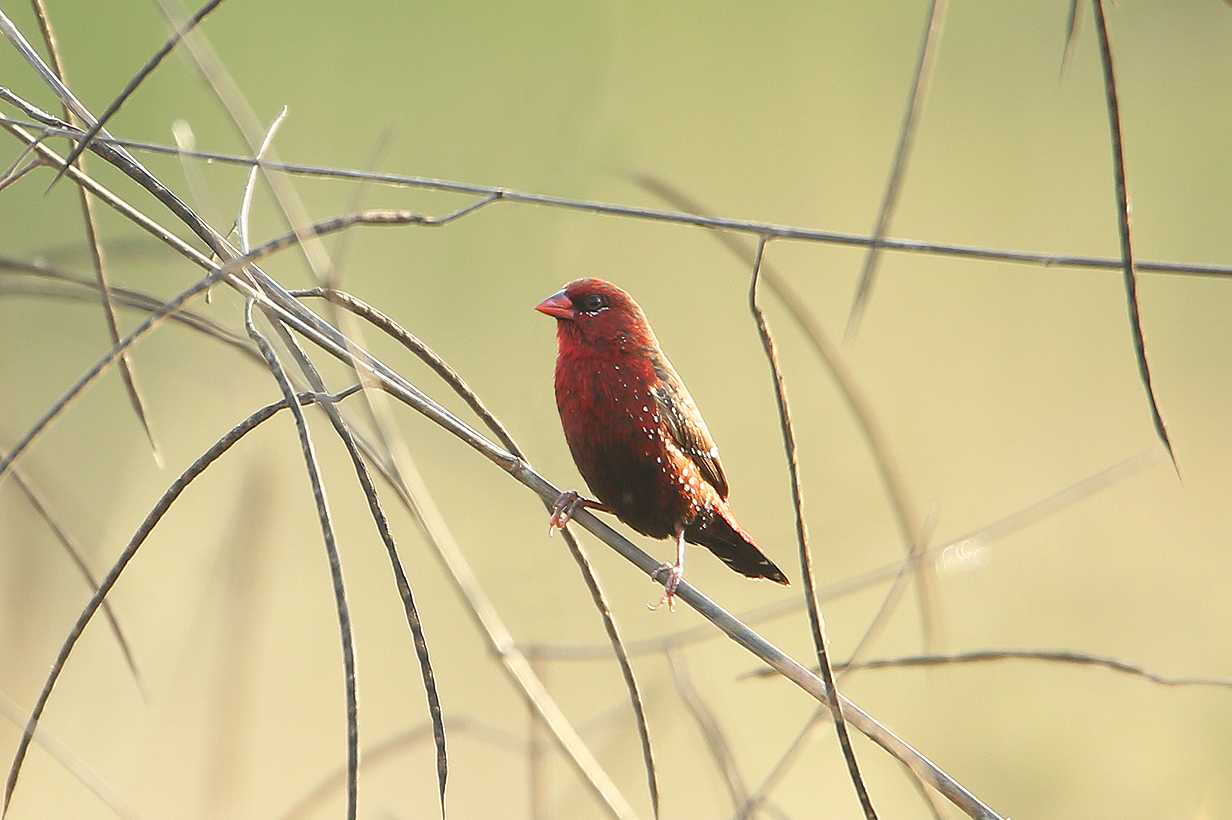



Red avadavat (male, at our lodge outside Tadoba)

Indian Silverbill
Mammals

This is Maya, a 4 1/2 - year -old tigress that we saw at Tadoba Tiger Reserve on Christmas Eve 2014.

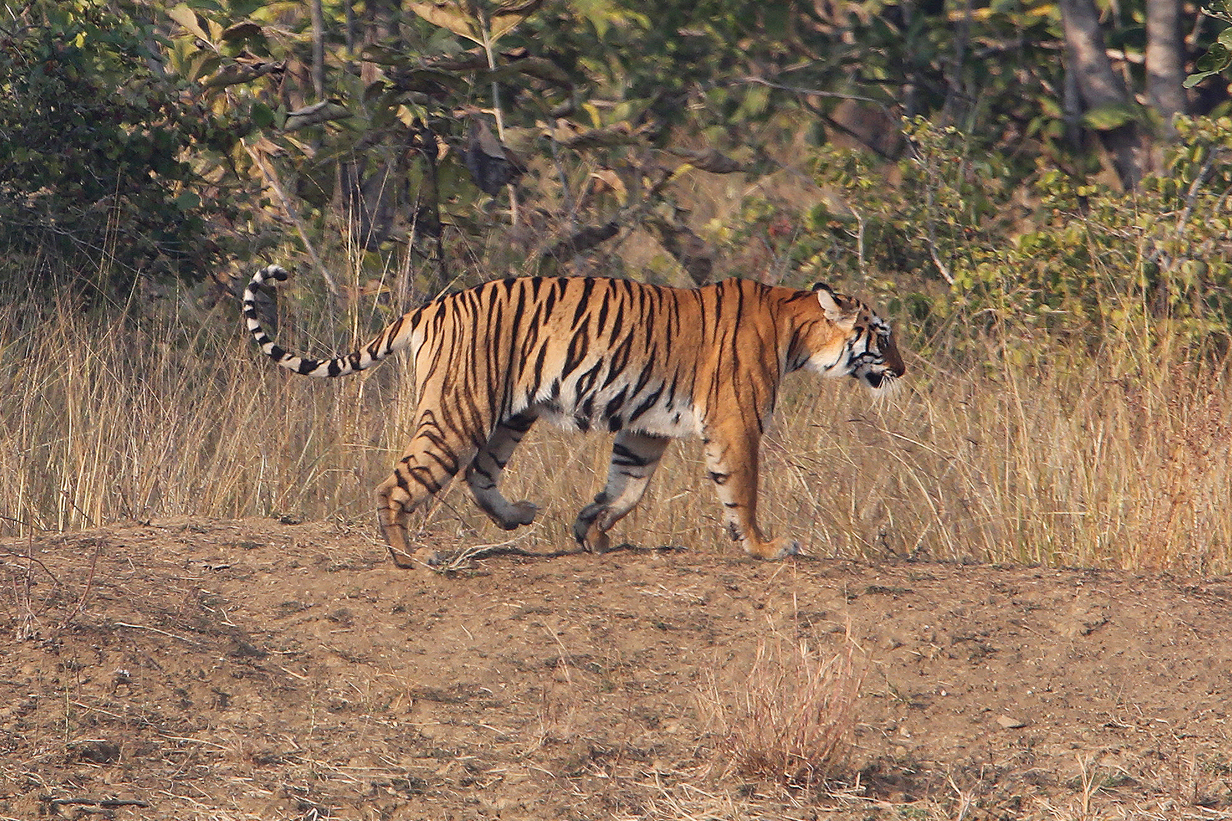
Maya

Sambar deer


Muntjac or Barking deer (This is the oldest known deer species; dating back 15 - 35 million years, according to Wikipedia. Further quoting Wikipedia, "Muntjacs are of great interest in evolutionary studies because of their dramatic chromosome variations and the recent discovery of several new species. The Indian muntjac (Muntiacus muntjak) is the mammal with the lowest recorded chromosome number: The male has a diploid number of 7, the female only 6 chromosomes." This picture is from Tadoba Tiger Reserve.)

Spotted deer (early morning)

Indian spotted deer (Note the fawn next to one mother.)
Before the hunt, these four adults face in four different directions. It did not help.

We saw a complete hunt at Tadoba reserve - not by a tiger, but by a wild dog that took down an Indian spotted deer fawn.

Rat snake tango (For the movie, see this link.)
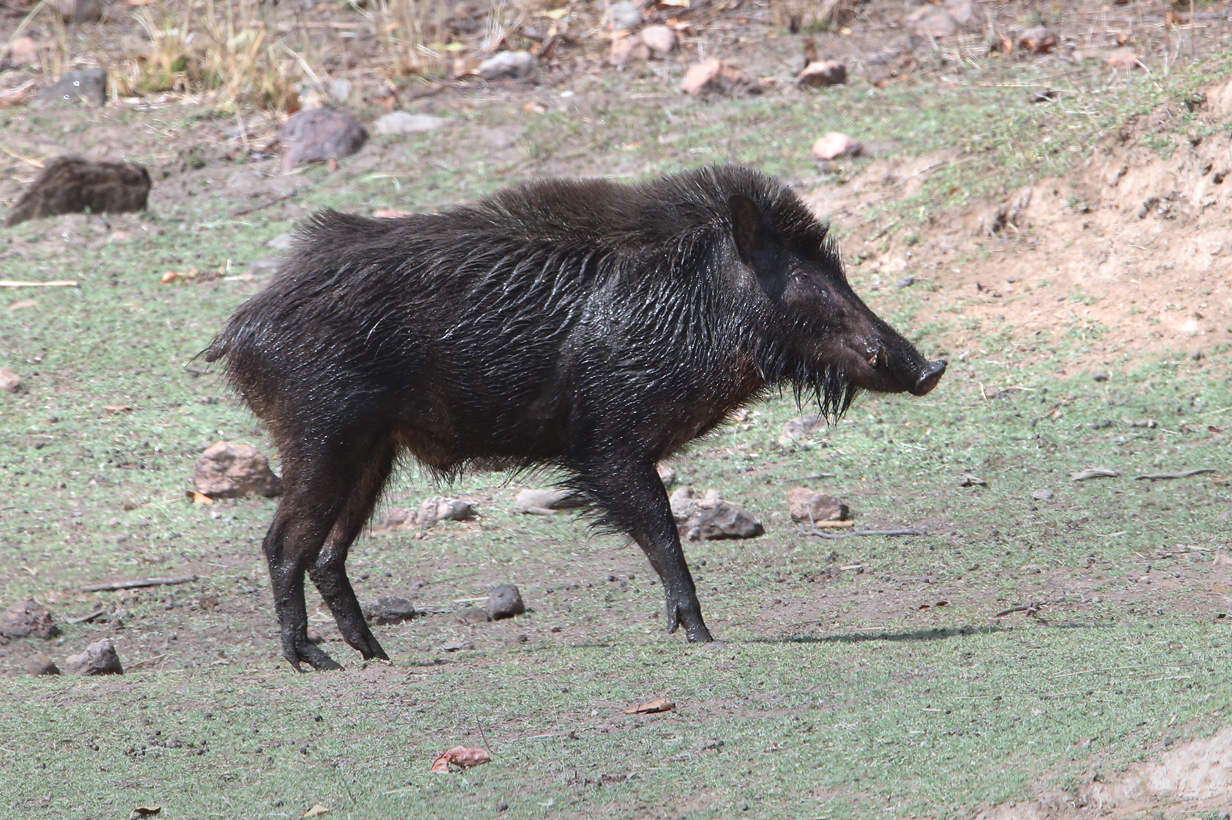
There is nothing quite so scruffy ... in a curiously dainty way ... as a wet wild boar. This picture and the rat snake picture were taken in Kanha National Park.

We had better luck seeing tiger in Kanha National Park in 2016. This is Link7, the dominant male tiger in the park. Hungry.

Kingfisher, the second-ranked, dominant male tiger in Kanha National Park. He is named for a black mark over his right eye that looks a little like a hovering kingfisher. He recently fed well and has a very full belly.
Our bird pictures from around the world follow standard ecozones approximately but not exactly:
Birds from the USA and Canada: our house, Hornsby Bend and greater Austin, Texas, California, Hawaii, Canada,
Neotropic birds from Central America and the Caribbean: Honduras, Costa Rica, Panama, Trinidad and Tobago
Neotropic birds from South America: Ecuador, Ecuador 2017, Brazil.
Western palearctic birds: Europe: Germany, Finland, Norway, Europe: United Kingdom, Europe: Spain, the Canary Islands, Europe: Lesbos, Greece, Israel
Eastern palearctic birds: China
Birds from Africa: The Gambia, South Africa
Indo-Malayan birds from India: North-west (Delhi, Uttar Pradesh, Uttarakhand) India: North-east (Assam, Arunachal Pradesh, Meghalaya) India: Central (Maharashtra, Madhya Pradesh)
Birds from Australia, New Zealand.
For our 2014 December trip to India, see this travelog.
For our 2016 May-June trip to India, see this travelog.
For our 2017 April trip to High Island, Texas, see this web site.
For our 2018 March trip to India, see this travelog.
For our 2018 May trip to China, see this travelog.
For our 2018 November trip to China, see this travelog.
For our 2019 April trip to High Island, Texas, see this web site.
For our 2019 July trip to China, see this web site.
For our 2021 April trip to High Island, Texas, see this web site.
For our 2021 December trip to Ecuador, see this web site.
For our 2022 January trip to Peru, see this web site.
For our 2022 July-August trip to Australia and Papua New Guinea, see this web site.
For our 2022 September trip to Bolivia, see this web site.
For our 2022 November-December pre-trip to Argentina (before our Antarctic cruise), see this web site.
For our 2022 November-December cruise to Antarctica, see this web site.
For our 2023 January birding in Chile, see this web site.
For our 2023 January-March cruise from Chile to Antarctica and around South America to Miami, FL, see this web site.
For our 2023 March-April birding in south Florida (after the Seabourn cruise), see this web site.